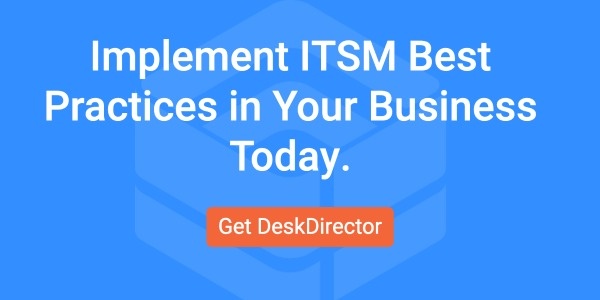In today's digital landscape, the concept of “drowning in emails” isn’t merely a metaphor for many businesses.
Those catch-all email addresses (e.g., contact@yourdomain.com), created with the noble intent of capturing every shred of communication, often become overwhelming repositories of messages. For IT teams, this deluge can mean missed critical alerts, delayed responses, and a hampering of overall operational efficiency.
Amidst this digital tumult, advanced IT ticketing systems can serve as a bridge between chaotic inboxes and a more streamlined, manageable approach to communication. In this post, we’ll explore the particulars and explain how.
Key Advantages of Using a Ticketing System for Inbox Management
No email left behind. With the ever-increasing volume of emails, the probability of missing vital messages has skyrocketed. An automation-enabled IT ticketing system ensures that every email gets its due attention, guaranteeing that no piece of communication is overlooked.
Passing the baton effortlessly. Emails are diverse. While some require managerial input, others might need tech support or customer service assistance. Ticketing systems have the capability to swiftly and smartly redirect messages to the right quarters, ensuring accurate assignment, timely responses and appropriate action.
Supercharging team efficiency. The daily grind of sorting through emails can be a massive productivity drain. By eliminating this manual toil, teams can channel their energy into their core tasks—effectively addressing issues and delivering impeccable service.
Setting Up Automated Rules for Email-to-Ticket Conversion
At its heart, email parsing is akin to decoding the dialect of digital messages. Every email has a story to tell, a request to make, or information to offer. IT Ticketing systems are finely tuned to listen and interpret. Recognizing specific keywords in subjects or the body of emails, these systems can promptly generate corresponding tickets. But it's not just about ticket creation; prioritization is the golden key.
Exhibit A: An email marked as “urgent” won't languish unnoticed because the system will ensure it's front and center.
Automatic Assignment and Prioritization
Imagine receiving an email from one of your most valued clients. In a typical scenario, it could be hours, maybe even days before it's noticed.
Another example: an email comes into support@yourdomain.com from your CEO who you’ve designated as a VIP.
With ticket automation in place, the rules you set will automatically flag these tickets to ensure top-priority treatment by a pre-selected technician. This discernment capability is pivotal in addressing these messages post-haste.
Spam and Archive Automation
Spam emails: the universal bane of all inboxes. They clog them up and hinder productivity. An IT ticketing system can swiftly identify and redirect these culprits.
On the flip side, not every email demands action. Some merely provide information, others might serve as documentation for future reference. By setting smart rules, such non-actionable emails can be auto-archived, ensuring the primary workspace remains uncluttered.
Driving Efficiency and Accountability
Implementing a ticketing system with automated inbox management isn’t just a minor operational tweak; it’s a significant strategic shift. By drastically cutting down on manual sorting, businesses can reclaim countless man-hours.
Moreover, every email converted into a ticket becomes a transparent, traceable record, fostering an environment of accountability. This tends to spur an increase in responsiveness which can lead to a lift in customer loyalty.
Getting Started: Steps for Businesses to Implement Inbox Management Automation
- Identify Different Email Types: Begin by examining the diverse range of emails that grace your inbox daily. Categorize them into complaints, inquiries, promotions, etc. This segmentation will be the foundation upon which you tailor your ticketing automation setup, addressing emails with pinpoint precision.
- Recognize VIP Communications: Prioritize crucial business communications by identifying VIPs based on their email domains or titles.
- Allocate VIP Ticket Handling: Decide and designate specific team members or departments to handle VIP tickets. This ensures that these high-priority emails receive immediate attention and a speedy resolution, preserving the value of these pivotal relationships.
- Periodic Review and Adjustments: As the business evolves, it’s imperative to periodically review and fine-tune your rules to ensure they remain aligned with shifting communication patterns and priorities.
Charting the Way Forward: From Email Chaos to Organized Mastery
In our digital age, businesses have a choice: wade through an endless sea of messages or adopt a more organized, structured, and systematic approach. And while many tools vie for attention, DeskDirector's advanced ticketing automation is one of its most distinctive and transformative capabilities.
Ready to revolutionize your email management strategy? Allow DeskDirector to show you the way. Dive in, book a demo, or connect with us today!









